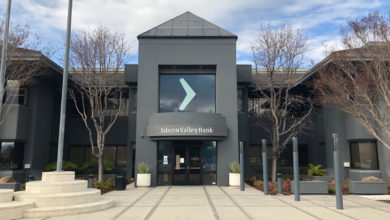On the evening of Feb 12, Butte, Sutter, and Yolo Counties in California ordered evacuations from populated areas within potentially affected areas should the emergency spillway at Oroville Dam, the highest in the country, give way. The evacuation order was due to the severe erosion caused by over 12,000 cubic feet per second of water flowing over the emergency spillway of the reservoir’s structure after the weir above it, (a gateway to allow for controlled flow of water,) was opened to relieve the damaged primary spillway.
The observed damage prompted county authorities to declare that there was an imminent collapse of the 30 foot tall emergency spillway which would send an uncontrolled wall of water down the Feather River, inundating communities along the way, exacerbating the already heavily stressed levee system downstream. Nearly 200,000 people were told to evacuate immediately.
A system of man-made earthen hills that trace the rivers, called levees, work to prevent flooding from rising rivers or tides by raising the level the body of water must reach before it spills into the land surrounding it. The region’s levees have already been under great stress since the beginning of the year. Weirs along the entire system have been opened to relieve pressure on the levees, allowing water to pour into controlled flood plains.
Even with this, the rivers are high and some rural communities have already suffered from minor uncontrolled flooding and levee breaches. Just this week, a train derailed south of Sacramento (about 70 miles from Oroville) sending 22 rail cars of food goods into a river after a section had been damaged by the flooding.
An impoverished region impacted by the dam crisis
The area between Chico and Sacramento, like much of central California, is primarily agrarian. Population centers like those of Oroville, Yuba City, and Marysville (all three of which were evacuated) and a dozen other smaller towns (also evacuated) house and support agricultural and agriculture support workers. They also serve as industrial centers for the processing and production of produce, lumber, and related industrial equipment.
Like Central California and other rural, agrarian, and lightly industrialized regions in the country, this region is also impoverished. With that in mind, this crisis exposes a lack of serious maintenance and investment in all levels of infrastructure. Those who work to keep the networks and systems usable do so diligently but with less than adequate budgets while the state focuses on investing in the tech and media centers along the coast.
The result of this is that when the evacuation order was made, highway systems that bottleneck down to two lane stretches of road turned into parking lots as tens of thousands of people took the same route from various locations to get to safety. When collisions occurred or vehicles ran out of fuel, they were sometimes abandoned along the road, forcing the passengers to hitch rides with others.
Environmentalists warned FERC more than 10 years ago
In late 2005 The South Yuba Citizens League, Friends of the River, and the Sierra Club warned the Federal Energy Regulatory Commission that the emergency spillway, which is currently just a hillside, needed to be lined with concrete. They warned that if this were not done, a great deal of erosion could occur should the emergency spillway ever be used. This has been proven to be a correct prediction. However, their warnings fell on deaf ears and they were ignored by agencies relevant to administering and operating the dam, including the State of California.
The primary spillway, which was intended to be the first line of defense against overfilling the reservoir, was damaged on Feb. 9. It was closed for inspection while the reservoir, which is fed by four different rivers, continued to fill the spillway at high rates after the previous week’s severe rain storms. Now that the emergency spillway is undergoing emergency repairs to fill a cavern that had begun to undermine it, the damaged primary spillway is the only line of defense for the rest of the rainy season which typically ends in April. Department of Water Resources and other state and federal agencies are working around the clock to lower the reservoir level and prepare before the next round of heavy storms pass over the region starting the night of the Feb. 15, lasting potentially 10 days.
Poverty and lack of central planning exacerbate impact of crisis
The evacuation, which was ordered on Feb. 12, ended Feb. 14, while the risk may actually last two weeks. The communities affected have been, for the most part, saved from a potential catastrophe, but with the evacuation order being downgraded from mandatory to being a warning, the call to evacuate again might not be heeded by some. The experiences of the last three days show a logistical nightmare for anyone seeking safety when given a window of one hour until a collapse of the emergency spill way or any other component of the dam and reservoir. For many, a one hour drive turned into a six hour drive.
The people of this region are being left behind by a state that undervalues their work and allows public safety to fall by the wayside over budgetary concerns. On top of all of this, lost wages for time away from work for many will go uncompensated and surely insurance companies will raise rates after this episode.
It is of foremost importance that people get to safety when signs of danger arise. We must struggle to ensure that these crises are planned for and that the people’s needs for safe infrastructure are met!






